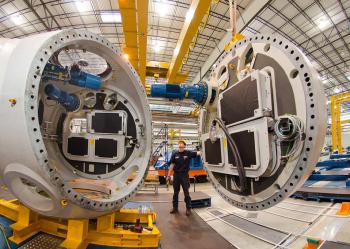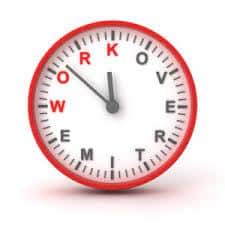Every now and then, we like to make sure that organizations not only recognize our knowledge about shift work and the change management process around it but they feel assured that we bring that high level of expertise to the table with every company we work with.
We’d like to share some quotes from past clients and take this opportunity to thank them for their kind words.
“Hiring Shiftwork Solutions was some of the best dollars we have spent. We hired them to help us go to continuous operations with buy-in from the workforce. Dan Capshaw’s exemplary operations analysis and work with our people showed how tightening our policies would be supported by the workforce and allow us to gain the additional capacity that we needed without changing schedules at this time. If you are looking for someone with sincerity and sensitivity in dealing with the whole workforce, then Dan Capshaw and Shiftwork Solutions are the ones you want to call.” Rick Rinard, Plant Manager, Dana Corporation
“Kellogg Company has used Shiftwork Solutions to implement alternative work schedules at several manufacturing locations across the US. We are extremely satisfied with the results. Shiftwork Solutions has developed a well-defined, easy-to-understand process to engage both our management teams and our hourly employees in the evaluation of various schedules and most importantly, ownership in deciding which schedule is best for them and how to best transition to those schedules. Morale has increased significantly at each of our facilities in which Shiftwork Solutions has assisted us in transitioning to alternative work schedules.” Mark Paschal, Senior Director, HR Practices, Kellogg Company
“Shiftwork Solutions helped us to successfully expand from 5 days a week to 7 days a week. Their expertise was instrumental in achieving employee support for this change.” Kathy Amrhein, Human Resources Manager, Pharmacia
“A shift structure change is an emotional event for an organization and Shiftwork Solutions was great in not only helping us manage that change but in helping the organization decide what change should be made.” Mike Vanhoy, Vice President of Operations, Infineon Technologies
“Jim Dillingham of Shiftwork Solutions is right up there with the best among consultants and business leaders. He learned our business very quickly by studying data and briefly meeting with key people from all levels. By working with and quickly gaining the trust of our people, Jim eliminated the volatility, softened emotions, eased fears, and helped our people select an alternate schedule that best matched their lifestyles. His disarming nature, thorough knowledge of the intricacies of work schedules and how they affect associates and their families, and superb communication skills led to a very successful implementation of an alternate schedule that significantly reduced overtime and turnover. Jim’s help in writing policies and procedures not only for ongoing, day-to-day operations but also for the implementation saved us time and anguish. I knew very little would have to be tweaked as we worked with our new rules for vacation scheduling, holiday pay, overtime, pay periods, and attendance. He delivered the best results per consulting dollar I have ever seen. On top of all this, he is fun to work with. Even though we are well over a year into our new schedule, our people still ask me if I ever hear from Jim Dillingham.” John Bartman, SPHR, Vice President, Human Resources, Snyder’s of Hanover
“…As a union organization, we are acutely familiar with some of the problems associated with shift work. Trying to balance a company’s needs with the needs of its members is not an easy task. “Our members at Electric Boat Corporation successfully changed to an alternative shift schedule to meet operational demands. Dan Capshaw from Shiftwork Solutions was instrumental in helping the company find fair alternatives that met our members’ needs. If you are thinking about changing schedules, I highly recommend you give Dan a call.” Mel Olsson, President, UAW Local 571
“Surviving in the tough business world we live in today requires three major components: satisfied shareholders, satisfied customers, and satisfied employees. Shiftwork Solutions led us through a high-quality process that proved that a win-win-win is possible, practical, and profitable. Building flexibility into our operating schedules, while meeting these three major components of our business, significantly positioned our operations for a workable long-term business equation.” Rick Halpin, Plant Manager, Polymer Group Inc.
“Shiftwork Solutions helped us focus our resources on our most productive equipment — allowing us to increase our capacity by over 10% without increasing labor costs or buying new equipment. The return on our investment in their consulting services was outstanding.” Mike Crane, Executive Vice President, Crane Plastics Company
“When it comes to helping shiftwork operations perform at the highest level possible, the consultants at Shiftwork Solutions are the best.” Bruce Hill, Vice President of Human Resources, The American Coal Company
“…Your obvious expertise in shift scheduling, Shiftwork Solutions’ database of schedules and survey results, and the empathy, sincerity, and sensitivity that you showed in dealing with our people were exemplary. In combination, these factors produced an on-target consulting result, which was by far the most impact delivered per consulting dollar that I have seen.” C. David Lilly, President, SiteRock Corporation
“If anyone is looking to move to a 24/7 shift operation, Shiftwork Solutions is the greatest resource you will find. They work with your employees throughout the entire process getting their feedback and buy-in allowing you to focus on satisfying your customer needs. They are truly awesome to work with and are there for you during all phases of the project.” Carol Jacobson, Human Resources Manager, Menasha Packaging
“Jim Dillingham and his team at Shiftwork Solutions provided great insight and were an invaluable resource allowing us to seamlessly implement the 24/7 schedule while keeping our team members actively engaged in the process.” Bill Berg, Regional Operations Manager, Menasha Packaging
“Jim provided invaluable insight into the many aspects of selecting our 24/7 shift system for our new plant in CA. We were looking for help and guidance in what felt like a minefield of possible outcomes. His analytical approach helped us understand and quantify many possibilities. His years of hands-on implementation knowledge and experience prepared us for the key and most important part of any proposed change, it’s the rollout. We took to heart his emphasis on getting the message right, communicating effectively and educating the affected employees on the new schedule” Lee Jared, Vice President / General Manager, Kalle Group / Jif-Pak
”Shiftwork Solutions enabled us to schedule our facility in the best way possible to meet our growing customer demand. The experience that Jim Dillingham brought to the table prevented us from making a lot of the mistakes we would have made had we sought to implement this strategy on our own. Jim was outstanding at effectively communicating the desired changes with our employee base, and collaborating with both the company and the union, in order to obtain the information and buy-in necessary to successfully implement a shiftwork schedule. Additionally, the data Jim was able to gather from his face-to-face discussions and surveys with our associates continues to help us optimize our scheduling to best suit our company and workforce needs. I would highly recommend Shiftwork Solutions to any company considering conversion to a shiftwork schedule.” Joseph J. Buchanan, Plant Manager, Carl Buddig & Company
“Jim Dillingham of Shiftwork Solutions LLC made a very significant contribution to our getting major and beneficial scheduling changes to the contract; doing so in a collaborative, non-adversarial way. I certainly appreciate his professional and team-oriented approach.” Howard Bernstein, Partner at Neal, Gerber & Eisenberg (Howard represents employers throughout the U.S. in labor relations and employment law matters and employment-related litigation, with an emphasis on contract negotiations, arbitrations and injunction proceedings, NLRB election campaigns, unfair labor practice cases, and employment discrimination matters.)
“Shiftwork Solutions provided the expertise we needed to evaluate the pros and cons of the various shift arrangements that can be used for continuous operations. Jim Dillingham coached our entire organization from how the various shifts work, associate survey, policy changes, implementation, and follow-up. Highly recommend both Shiftwork Solutions and Jim Dillingham to get it done right the first time.” Tom Gilmore, Sr. HR Manager Nissin Brake
“Shiftwork Solutions LLC exceeded my expectations while facilitating an agreement between the union and management to implement a totally overhauled continuous operation work schedule for our 300 person facility. Given the long history of the plant, I was pleasantly surprised at how easily Jim Dillingham was able to get the job done. Jim’s experience not only helped us reach a quick agreement but additionally, we found a detailed solution that was well received by both sides after the contract.” Bernie Anderson, President Miba Bearings US, LLC
We are proud to provide expertise organizations value and address the challenges they face due to fluctuating demand, specifics of labor supply or else. Through our services they have fully implemented new schedule patterns supported by team members, they have a managed transition — policies and processes in place, engaged management and – if needed – union negotiation during the change process. They gain additional capacity, save costs, time and anguish. They can reduce overtime, increase output and adjust to fluctuations in demand to ultimately arrive at satisfied customers, employees, and stakeholders.
We appreciate the opportunity to think with them and work with them to achieve their highest potential.
Call Us and We Can Help
Call or text us today at (415) 858-8585 to discuss your operations and how we can help you solve your shift work problems. You can also complete our contact form and we will call you.







